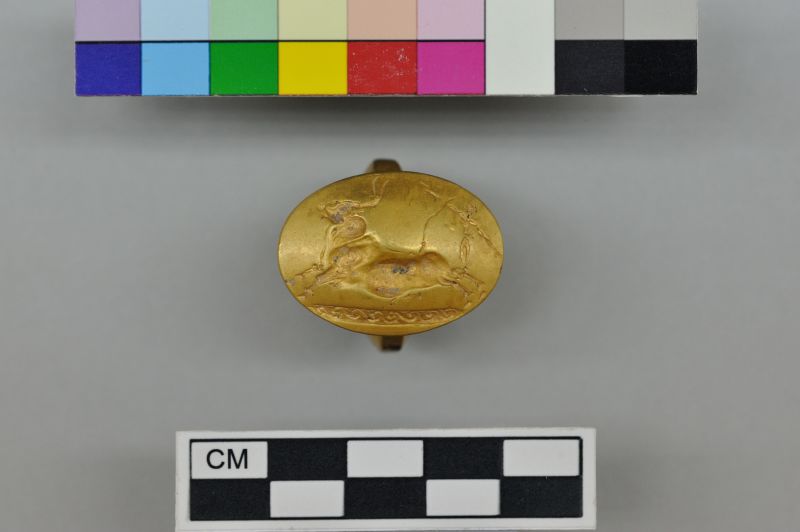Remarkable Artifacts Unearthed from the Ancient Tomb in Greece
The recent discovery of an unlooted tomb in Greece has unveiled a plethora of remarkable artifacts, shedding light on the burial practices of a wealthy warrior-king from 3,500 years ago. This extraordinary find is attributed to the ongoing archaeological efforts by a team led by experts from the University of Cincinnati.
Stunning Jewelry and Artifacts
Among the items discovered in the tomb are four solid-gold rings, noted for being the largest number found at a single burial site in Greece. These gold rings feature intricate designs, including a portrayal of a Cretan bull in a dynamic running scene.

Symbolic Seal Stones
Additionally, more than 40 intricately-designed seal stones were found, originating from the sophisticated Minoan culture of nearby Crete. These stones often feature long-horned bulls and human figures leaping over their horns, symbolizing the cultural significance and artistry of the time.

Intriguing Personal Items
The excavation team also uncovered six ivory combs, an unexpected find that challenges traditional perceptions of gender roles in ancient Greece. Typically, these items were presumed to belong to women when found within tomb contexts. However, the diversity of artifacts found suggests a more complex social structure.

Significant Ritual Objects
Furthermore, a bronze mirror with an ivory handle was exhumed, marking a rare find that reflects the significance of this burial site. According to Greece’s general secretary of the Ministry of Culture, Maria Vlazaki, this unlooted tomb represents an extraordinary discovery in archaeological practices.

Conclusion
In conclusion, this extraordinary discovery in Greece not only reveals the wealth and status of a remarkable individual from the past but also offers insight into the cultural and social dynamics of the time. As further studies unfold, the implications of this find will undoubtedly enhance our understanding of ancient civilizations.




